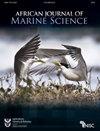浮游动物的代谢编码证实了西印度洋十足目甲壳类动物物种向南扩散
IF 1.4
4区 生物学
Q3 MARINE & FRESHWATER BIOLOGY
引用次数: 1
摘要
元条形码法测定海洋浮游动物的种类组成是一种发展迅速的方法,但尚未完全标准化。将物种与条形码序列联系起来的DNA条形码参考文库仍然不完整,在分类学上不精确,并且偏向于研究充分的区域。我们利用元条形码技术确定了南非东部海洋浮游动物中存在的十足甲壳类物种,这是一个参考图书馆相对较少的地区。在大陆架(20米和50米等深线)和大陆架边缘(100米和200米等深线)用拖网对浮游动物群落进行取样,并使用高通量测序技术对样品进行处理。利用细胞色素c氧化酶亚基I (COI)基因区域对扩增子序列变异进行物种水平的分类定位,与条形码记录的相似性分别为95%和99%。检测到的物种与该地区的发生记录进行了交叉比对。在95%的序列相似度下,检测到81种十足动物,但在99%的严格阈值下,这一数字下降到60种。假阳性鉴定减少了60%。真蟹(Brachyura)的比例过高;对虾(石鳃目)、龙虾(螯虾目)和穴居虾(轴总目)的比例与发生记录一致;真虾(Caridea)和寄居蟹(Anomura)的代表性不足。元条形码在来自东非的样本中鉴定出19种热带西印度洋(WIO)物种,证实漂流阶段通过莫桑比克海峡向南扩散。WIO物种与Agulhas生物区(陆架边缘探测)和Delagoa生物区(浅层探测)的一致性与热带物种在温暖水团中的分布一致。对海洋浮游动物群落进行元条形码编码以获取物种水平的信息,推进了远洋生态系统的高分辨率生态研究。本文章由计算机程序翻译,如有差异,请以英文原文为准。
Metabarcoding of zooplankton confirms southwards dispersal of decapod crustacean species in the western Indian Ocean
Metabarcoding to determine marine zooplankton species composition is a fast-developing method, yet to be fully standardised. DNA barcode reference libraries that link species to barcode sequences remain incomplete, taxonomically imprecise, and biased towards well-studied regions. We used metabarcoding to determine the decapod crustacean species present in the marine zooplankton off eastern South Africa, a region for which reference libraries are comparatively poor. Zooplankton communities were sampled with tow nets at stations on the shelf (20- and 50-m isobaths) and at the shelf edge (100- and 200-m isobaths), and the samples were processed using high-throughput sequencing technology. The cytochrome c oxidase subunit I (COI) gene region was used for taxonomic assignment of amplicon sequence variants to species level at 95% and 99% similarity to barcode records. Detected species were cross-referenced against occurrence records from the region. Eighty- one decapod species were detected at 95% sequence similarity, but this declined to 60 species at the stricter 99% threshold. False-positive identifications were reduced by 60%. True crabs (Brachyura) were proportionally over-represented; the ratios of prawns (Dendrobranchiata), lobsters (Achelata) and burrowing shrimp (Axiidea) were consistent with occurrence records; and true shrimps (Caridea) and hermit crabs (Anomura) were under-represented. Metabarcoding identified 19 tropical western Indian Ocean (WIO) species in the samples from eastern Africa, confirming a southwards dispersal of drifting phases through the Mozambique Channel. Congruence of WIO species with the Agulhas Bioregion (shelf-edge detections) and Delagoa Biozone (shallow detections) was consistent with the dispersal of tropical species in warmer water masses. Metabarcoding of marine zooplankton communities to obtain species-level information advances high-resolution ecological research in pelagic ecosystems.
求助全文
通过发布文献求助,成功后即可免费获取论文全文。
去求助
来源期刊

African Journal of Marine Science
生物-海洋与淡水生物学
CiteScore
2.60
自引率
16.70%
发文量
17
审稿时长
6-12 weeks
期刊介绍:
The African (formerly South African) Journal of Marine Science provides an international forum for the publication of original scientific contributions or critical reviews, involving oceanic, shelf or estuarine waters, inclusive of oceanography, studies of organisms and their habitats, and aquaculture. Papers on the conservation and management of living resources, relevant social science and governance, or new techniques, are all welcomed, as are those that integrate different disciplines. Priority will be given to rigorous, question-driven research, rather than descriptive research. Contributions from African waters, including the Southern Ocean, are particularly encouraged, although not to the exclusion of those from elsewhere that have relevance to the African context. Submissions may take the form of a paper or a short communication. The journal aims to achieve a balanced representation of subject areas but also publishes proceedings of symposia in dedicated issues, as well as guest-edited suites on thematic topics in regular issues.
 求助内容:
求助内容: 应助结果提醒方式:
应助结果提醒方式:


